Chess books are ubiquitous. Experts estimate that more books have been written about chess than about all other games combined. Over the centuries, for more than a millennium. Chess addicts may own hundreds of them. I grew up with books. From the start I was a bibliophile, fanatically so, and in the course of a lifetime have collected thousands of books – including chess books, which for decades have been sent to me by friendly publishers. To these (the chess books, not the publishers) I have always had an ambivalent relationship. On the one hand, I was proud to own them. On the other, I was distressed by the colossal waste they represented.
Chess books have one grave disadvantage: most cannot be read! Not by 95% of the people who buy them.
Take for instance the famous and for a long time ubiquitous Chess Informant. I had approximately thirty volumes, which I collected, but never actually read. I'd look at some of the diagrams and try to follow the next three to five moves in my mind, but that was it.
I did notice that a certain percentage of the visitors in my house, the ones who had IM and GM titles, and especially the super-GMs, read my Informants like Agatha Christie novels. The young Anand, for instance, would grab the latest volume, curl up in a corner, and spend hours giggling and laughing. He was replaying the games in his head. Nobody, really nobody, ever pulled out a chessboard to follow the move. Either they could replay everything in their minds, or they used my method of diagram scanning.
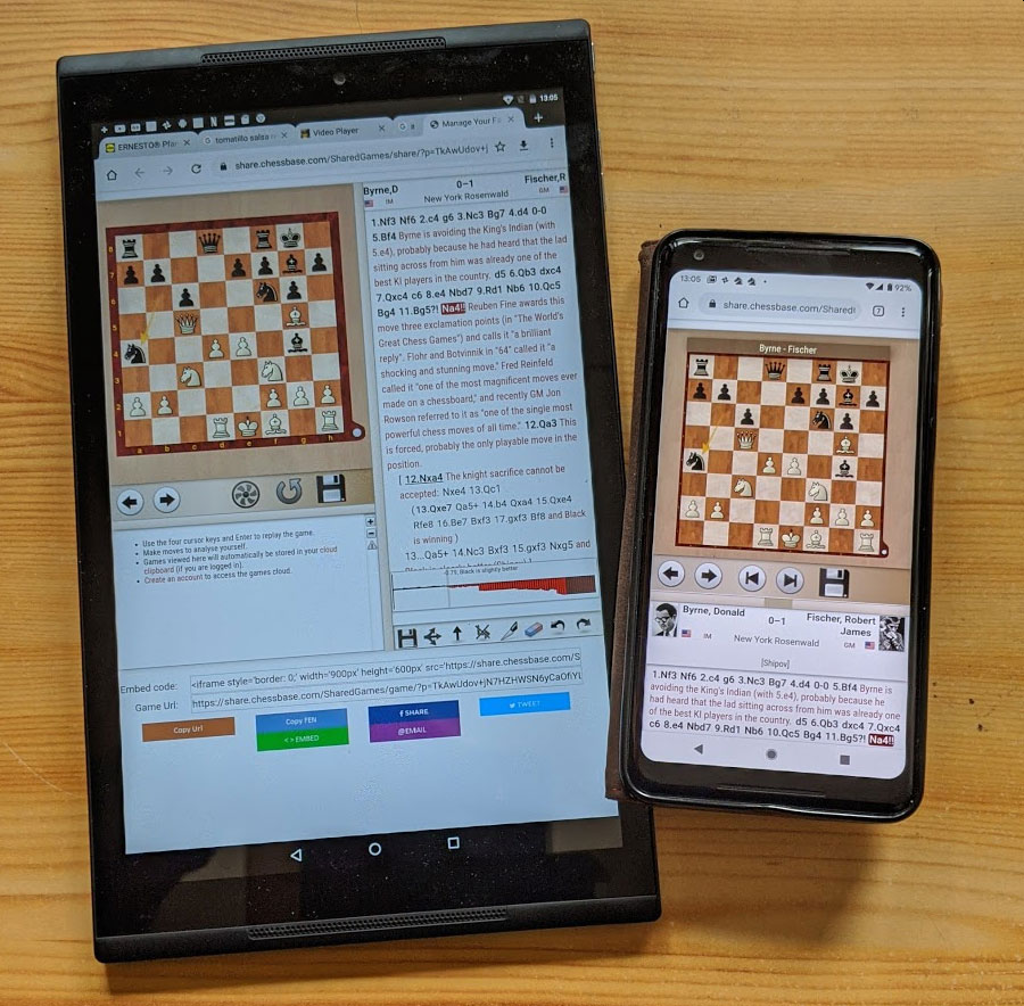 So, are chess books and magazines on the way out? No, they are just migrating into the cloud. Computers provide the most gorgeous way of reading about chess: the games can be replayed on the screen, move by move, you can have a chess engine watching and helping you to understand what is going on, answering your every "What if?" and "Why not" question. In addition, you can have a limitless number of pictures, audio commentary, videos. There is no way that printed books can compete with that.
So, are chess books and magazines on the way out? No, they are just migrating into the cloud. Computers provide the most gorgeous way of reading about chess: the games can be replayed on the screen, move by move, you can have a chess engine watching and helping you to understand what is going on, answering your every "What if?" and "Why not" question. In addition, you can have a limitless number of pictures, audio commentary, videos. There is no way that printed books can compete with that.
How can we get the moves of the game, printed on very thin slices of tree, in replayable form into the computer? One way is by using "QR codes" in the book, which the camera of your smartphone or tablet can pick up quickly and effectively, immediately executing the instructions contained in the QR matrix.
My good friend Prof. Christian Hesse used this system in 2015, in his (German language) book Damenopfer. There, for the first time, I believe, you could scan a QR image printed next to each diagram or at the start of a game, and then replay everything on the electronic device you have in your pocket or on the coffee table. You immediately got the game, moves, the entire analysis, and could replay them in your garden, on a train or plane, anywhere.
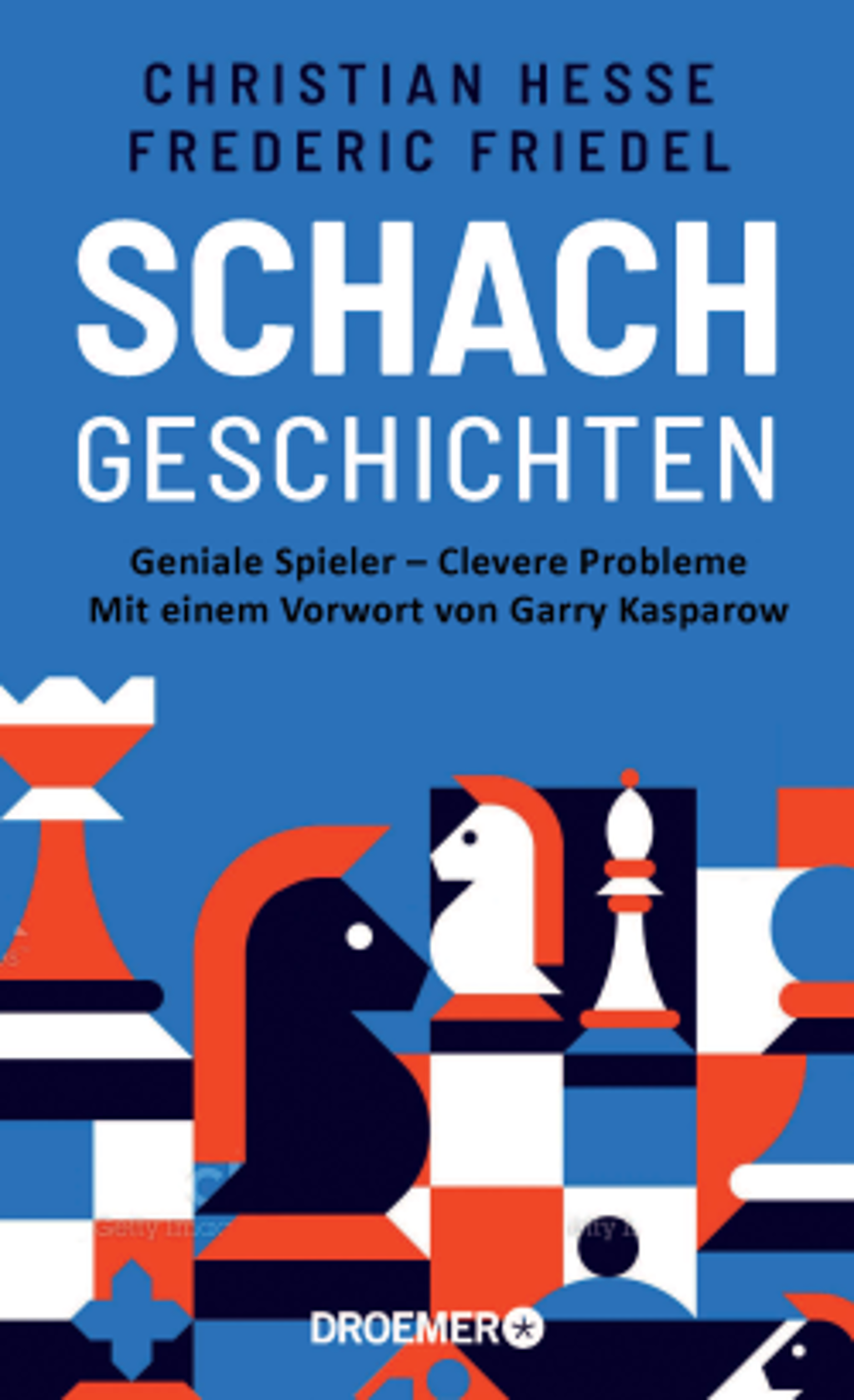
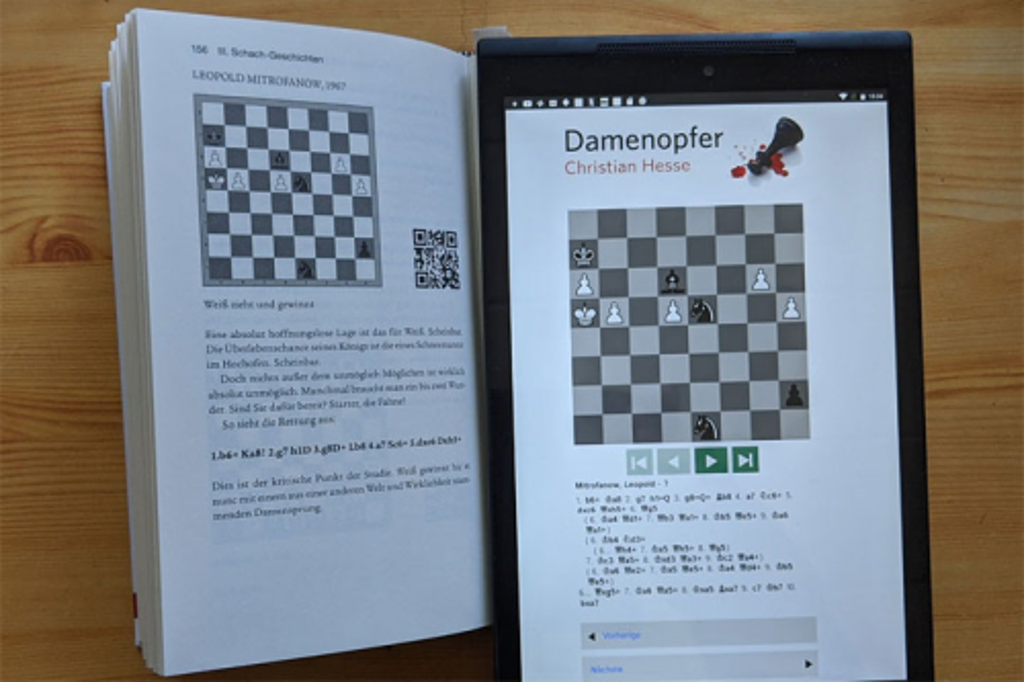 For a long time people have been urging me to write a book (or books) with stories about chess encounters with famous players, with puzzles and chess pleasantries. I have done so: Schachgeschichten appeared (in German) in October 2022, and is due to be published in English in the near future.
For a long time people have been urging me to write a book (or books) with stories about chess encounters with famous players, with puzzles and chess pleasantries. I have done so: Schachgeschichten appeared (in German) in October 2022, and is due to be published in English in the near future.
Schachgeschichten has a QR link to every game in the book. That means you whip out your mobile phone, show it the QR code, and can then immediately follow the moves that are given in the book. That ensures that the games will be actually be replayed, not simply ignored.
ChessBase e-Books
But there is another solution: publish chess books electronically, in the first place. The world is moving towards e-books, and this is especially advantageous for chess.
ChessBase has developed a new book form for chess. This is mainly the brainchild of our young programmer Fabian Brinkmann, who developed a CMS (content management system) to design and publish electronic chess books. This one here is a first example that will show you how this works.
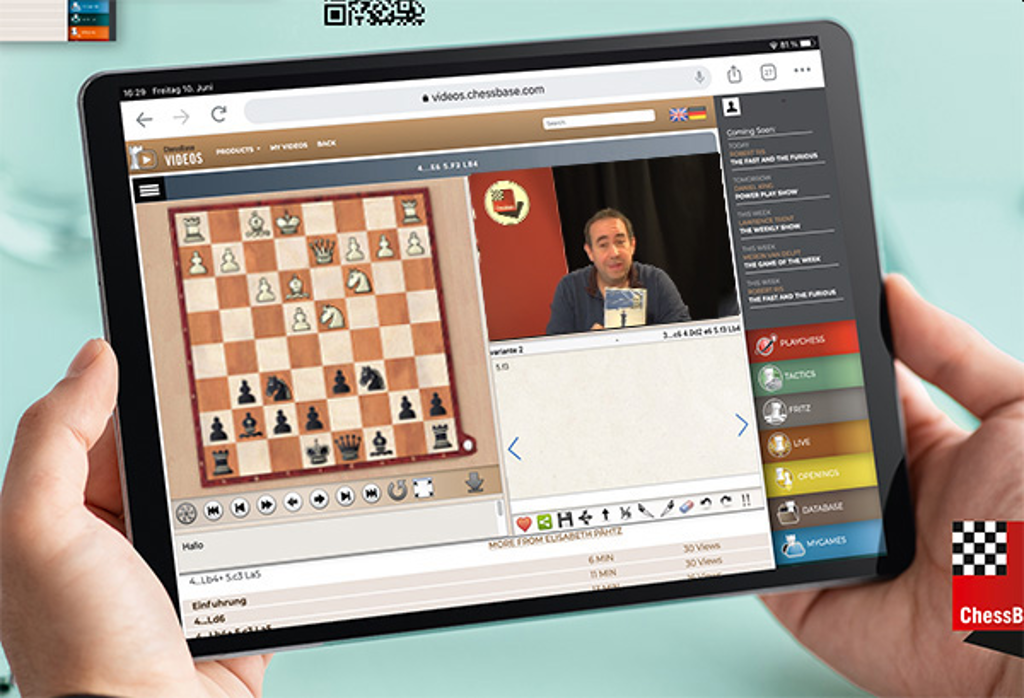
The ChessBase E-books can also contain video lectures
Diagrams
The chess diagrams shown in the ChessBase books are really quite special.
First of all you can generally move pieces on our chess diagrams. That allows you to experiment with different moves. There are buttons below the board with which you can retract and also replay moves, or go back to the initial diagram position. And there may be a fan button – one that switches on an engine to help with your analysis. Try it out on the diagram.
The solution to this puzzle is 1.c7 Rd6+ 2.Kb5 Rd5+ 3.Kb4 Rd4+ 4.Kb3 Rd3+ 5.Kc2! Rd4! 6.c8=R! Ra4 7.Kb3 1-0. You may not immediately understand all the subtleties of the study, but you can simply switch on the engine to find out why other lines do not work.
The engine window that appears below the diagram has a number of functions. You can ask for more than a single line of play, you can ask it to show you the threat in the current position, you can ask it for hints, or a visual evaluation of the position.
In some cases the diagram will not offer engine analysis. This is either because we want you to solve the position yourself, without any assistance, or we have set the diagram to play out the position against you. Try it here:
In this diagram you must try to hold a draw. You can actually do so against the engine. Enter a white move and Black will reply, attempting to win. It is only by entering the correct moves that you can hold the position. You can find out why 1.c8=Q does not work: the diagram immediately replies with 1...Bf5+ 2.Kc7 Bxc8, and after 2.Kd6 Bxc8 3.Kc5 the pawn on b7 does not fall — Black will simply protect it with his bishop, and use his king to accompany it to promotion.
The only way to win is 1.Kc8!! b5 2.Kd7! b4 3.Kd6 Bf5 4.Ke5 Bc8 5.Kd4 draw.
The PGN replayer
Finally, you will often find a full replay app, one in which a number of games might be listed, each of which you can load and replay. Here's an example. In one of the chapters I gave readers positions to solve – by moving pieces on the standard diagrams. At the end of the page there is a replayer with all the positions:
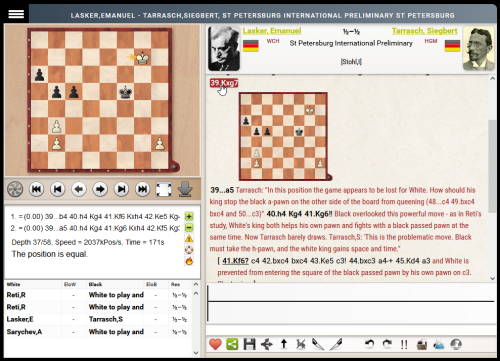 In the replayer you can select games, play through the moves, move the pieces and enter new lines of play, flip the board, etc. Naturally, clicking on a move in the game notation will immediately cause the diagram to jump to that position. You can maximize the replayer and even move the dividers on to adjust the layout.
In the replayer you can select games, play through the moves, move the pieces and enter new lines of play, flip the board, etc. Naturally, clicking on a move in the game notation will immediately cause the diagram to jump to that position. You can maximize the replayer and even move the dividers on to adjust the layout.
And you can start an engine (fan button below the board) to help with your analysis.

To the right of the engine window there are buttons that allow you to increase the number of lines the engine is calculating, or ask it to tell you what is threatened by a move, or give you hints and a visual evaluation of the position. Experiment with these features, you will find them extremely useful for your understanding of games and studies.
There is one more useful buttons below the board: click on the arrow down icon to download the FEN description of the position, the notation of the game (in PGN), a text file to share with others, a QR code, links, etc. Try them out and find out how you can best use them.
In some cases the notation of a game might appear in the text, just like it does in a book. In such cases you simply click (or tap) a move, in order to get a replay board with all the facilities described above. You can resize the board and place it anywhere you want.
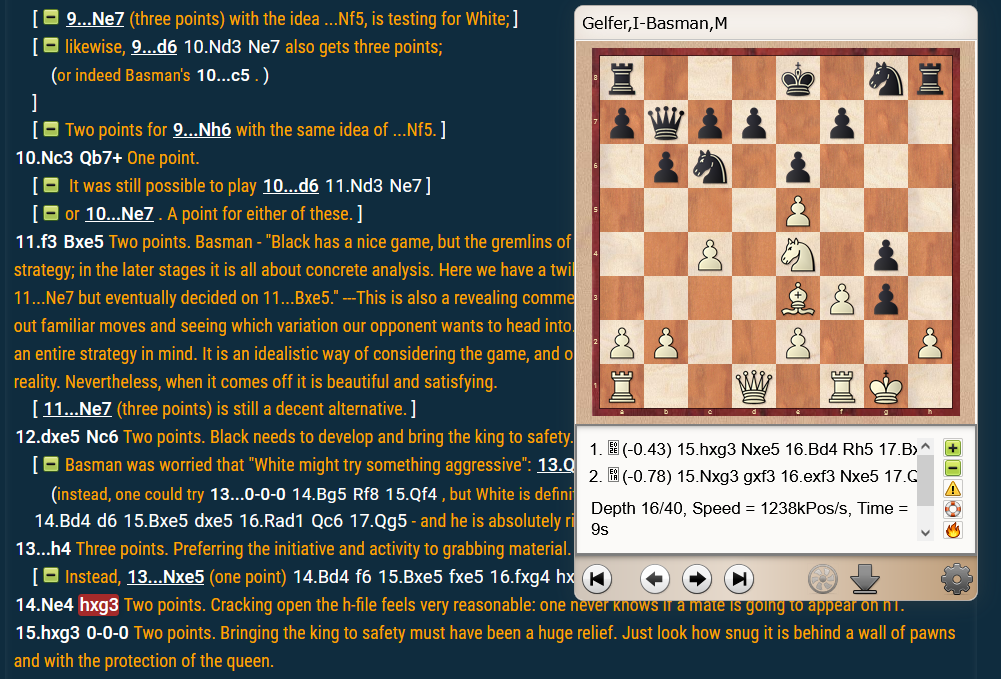
One final (and fairly important) feature: you can click on any picture or images to enlarge it to your browser window size. This means we can embed small images, which you can view in full size if you wish.